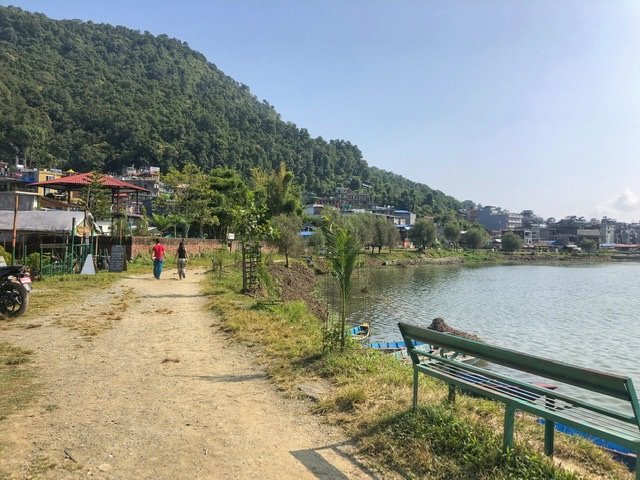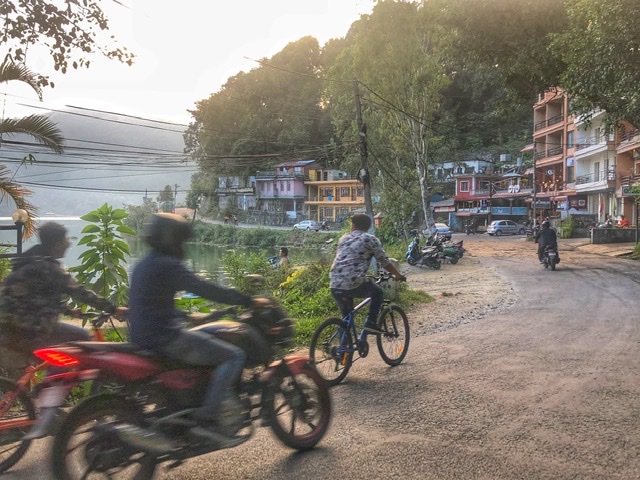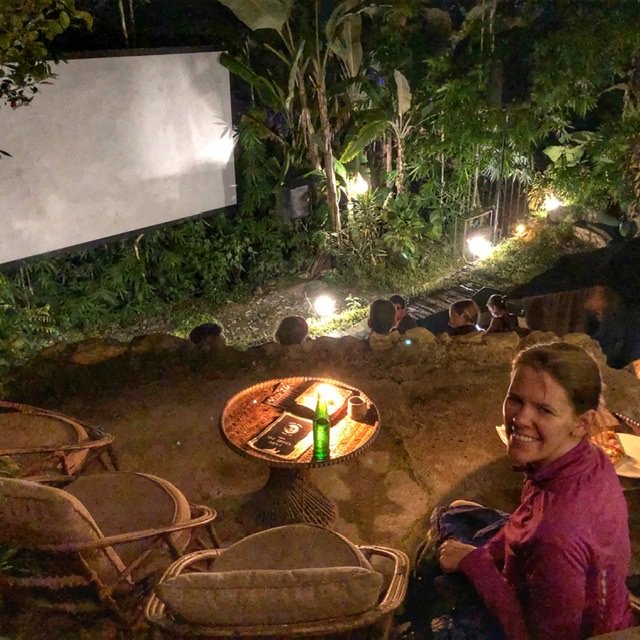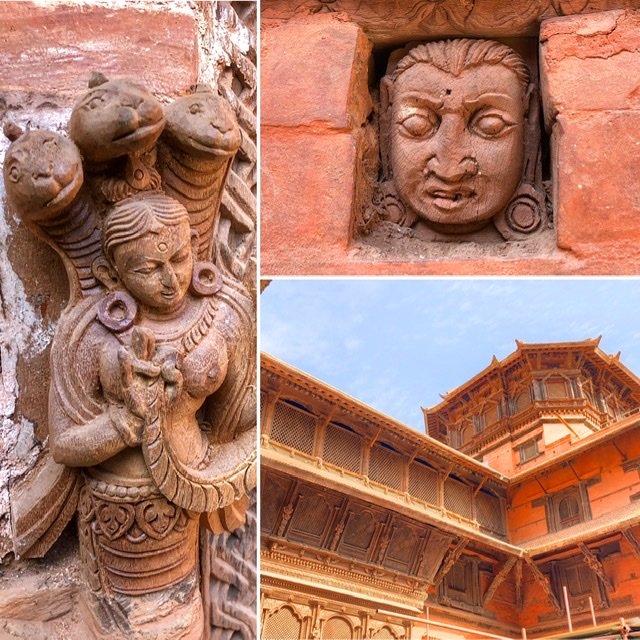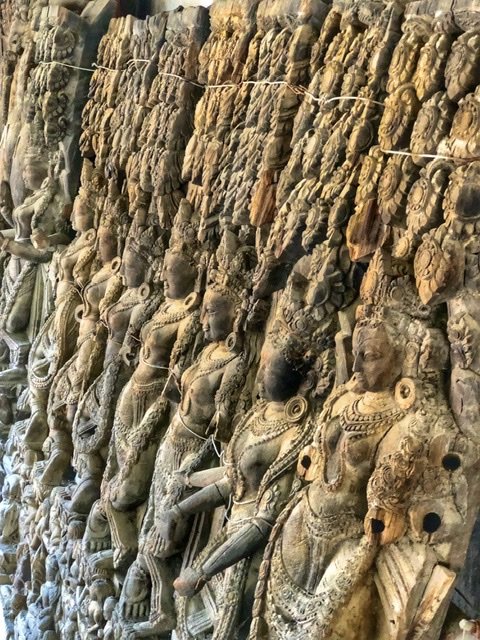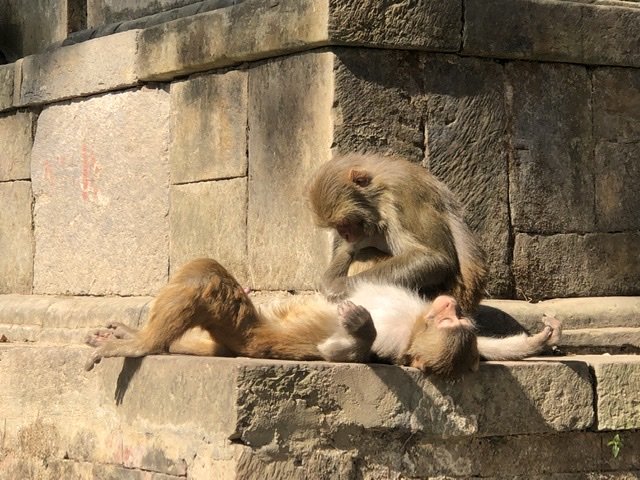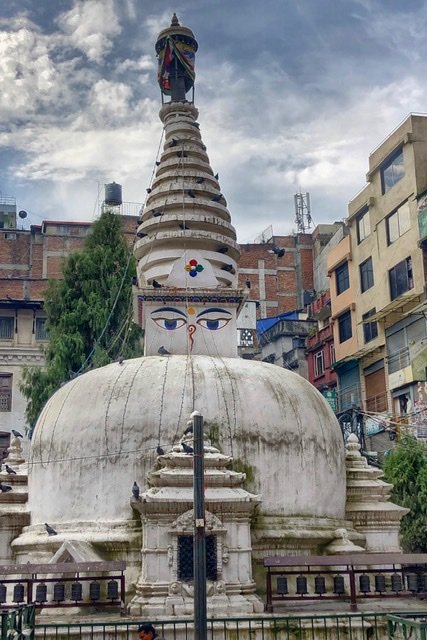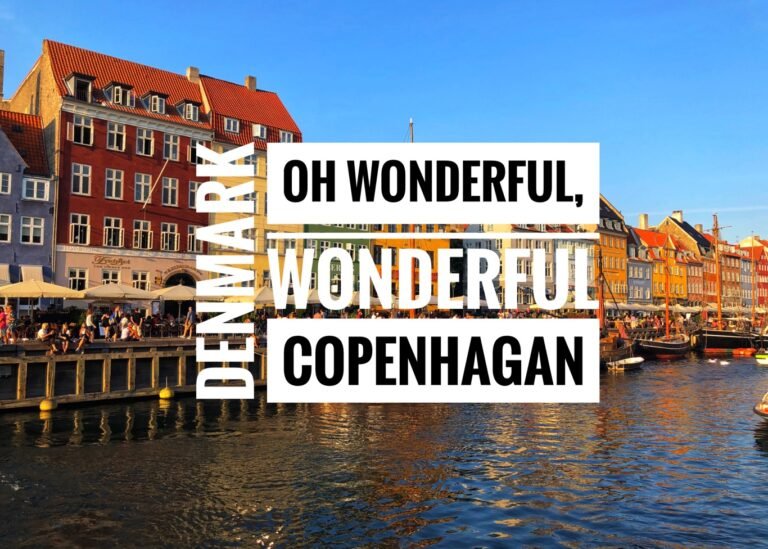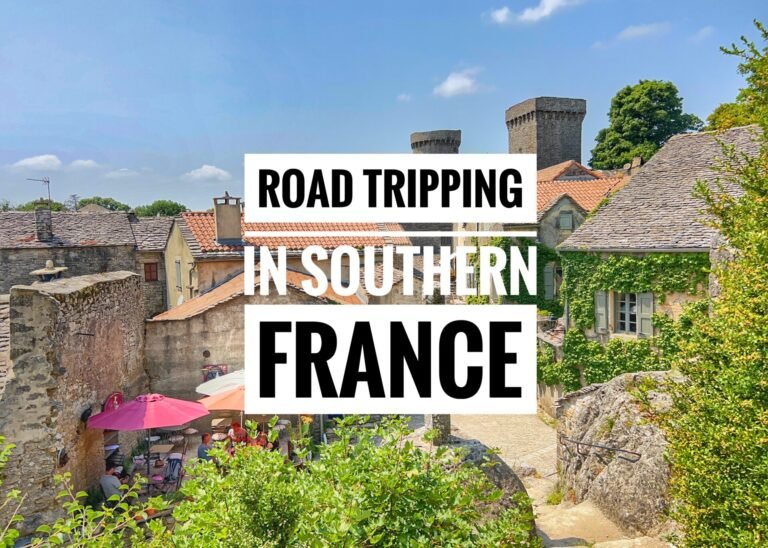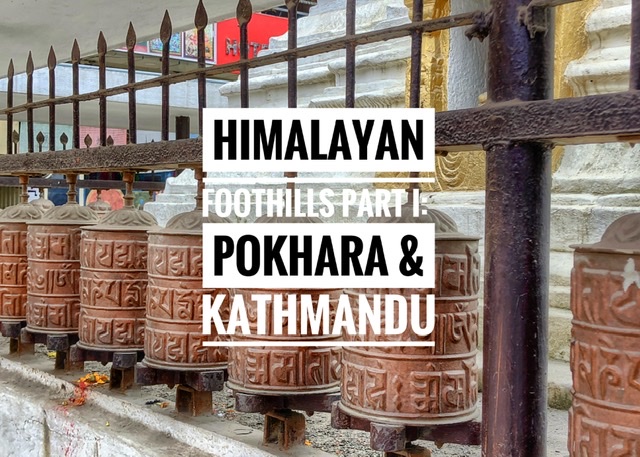
There are so many things about North Lakeside in Pokhara (Poke-ah-ra, not Poke-ahr-a) that just make you want to drop your trekking poles, and hang out for awhile. We’re not usually into touristy places, but the clean air, abundant ethnic and vegetarian food options, juice bars, yoga classes, lakeside strolls, movie garden, Thai massages and the rock-bottom prices on everything made this hippie haven a welcome respite after months of hard travel.
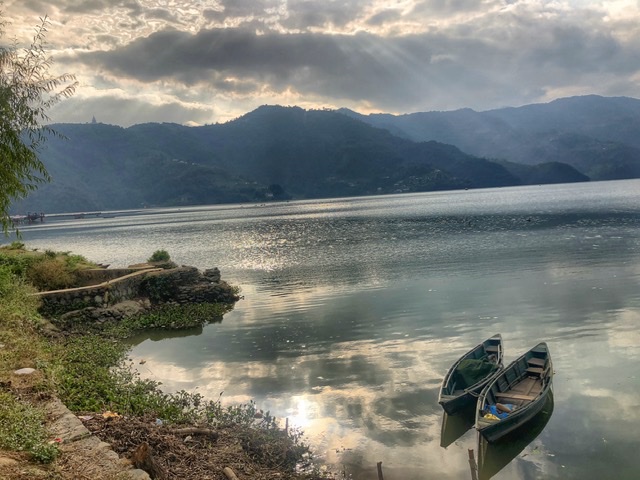
The lake itself is super inviting for long walks or boat rides. The two-hour rides are about 500 rupees ($4.35) and for 50 rupees more include a paddler so you can really be lazy…
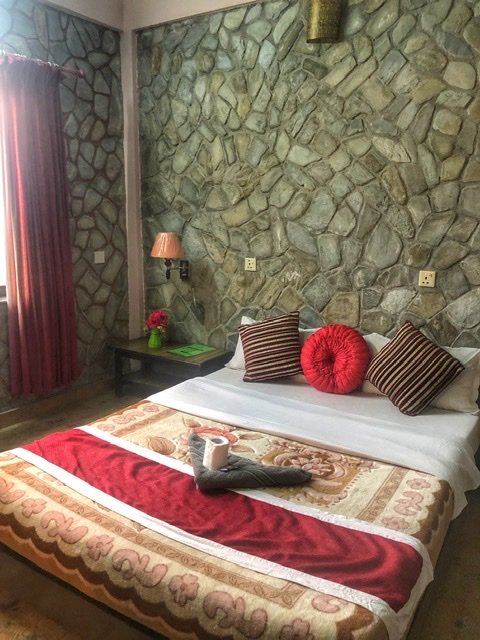
We stayed in the north part of Lakeside called Sedi Begar, which had even more budget options (our really nice room at Hotel Monastery was $9/night with breakfast), a less party-happy crowd, and well…just less crowds.

The Umbrella Cafe was the perfect place to pop a squat on the floor and indulge in a giant veggie burger and a Buddha Bowl.
Strolling through the streets of Pokhara.
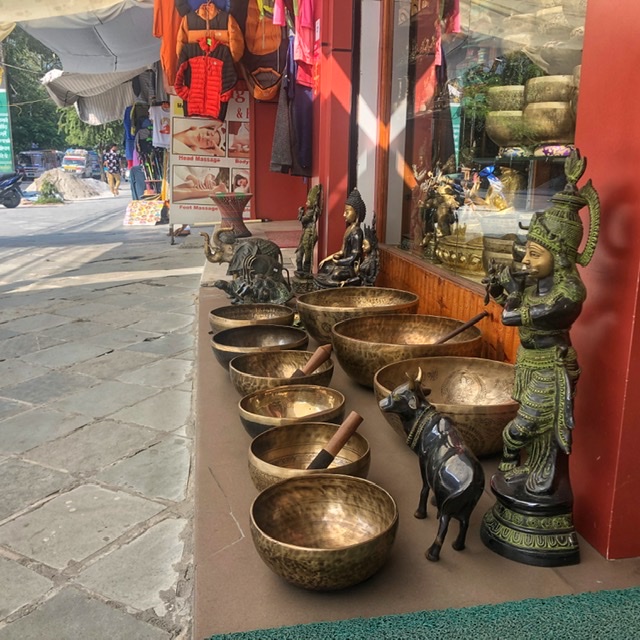
Tibetan bowls for sale! They were surprisingly difficult to “play” because you have to keep your hand flat and the natural tendency is for your fingers to creep up and cradle it. Although it would have been a nice addition to Mandy’s future yoga collection, it didn’t seem like a totable backpack item!
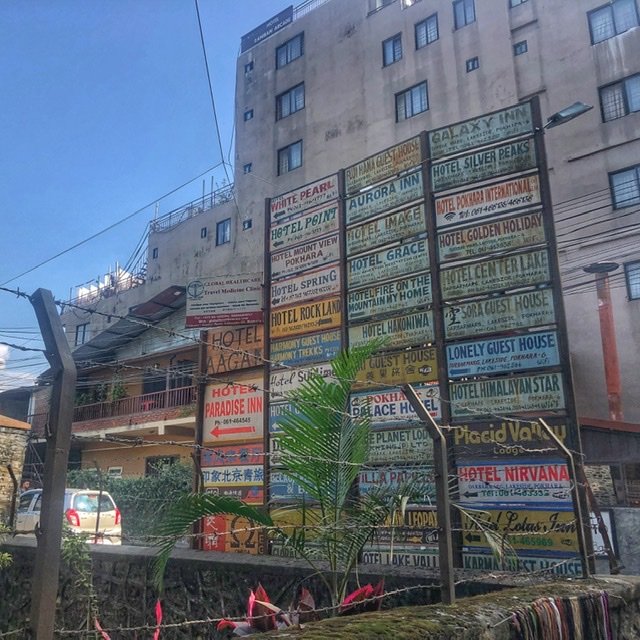
This is why we didn’t stay in South Lakeside. Just a little too congested for our taste. ?
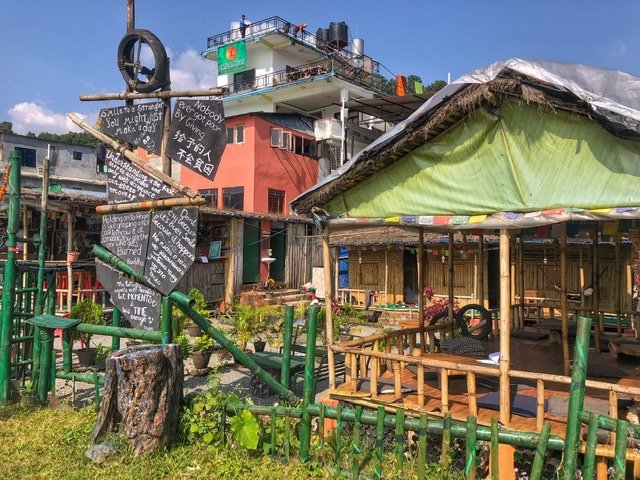
Lake cottages and yoga gardens line the lake. Mandy enjoyed a 90-minute long class the day after our trek for 400 rupees (about $3.50) which was exactly what she needed after the many miles endured.

In case yoga and massages aren’t exciting enough for you, Pokhara also features a rip-off Disneyland. Love how they can get away with this here!
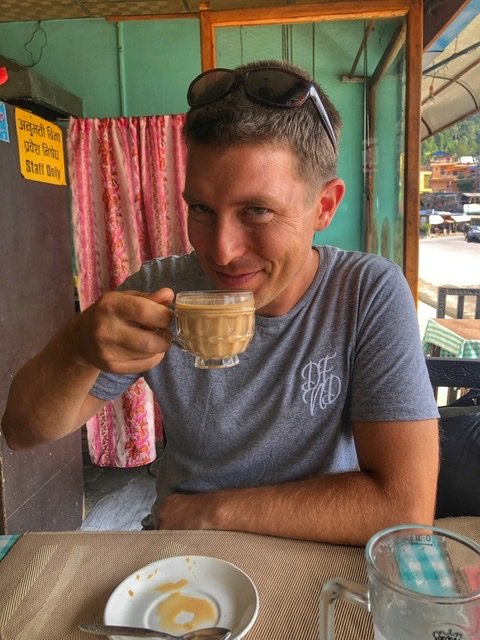
Greg taking a sip of something we can’t get enough of…Masala Chai Tea. Masala chai is a flavoured tea beverage made by brewing black tea with a mixture of aromatic Indian spices and herbs. So, so divine!

Can’t tell you how many times we’ve eaten Veg Momo in Nepal. Momos, a dumpling stuffed with delicious sautéed veggies, are popular street food in India and Nepal, but actually a Tibetan recipe.
This had to be our favorite night out in Nepal. The open-air Movie Garden was like enjoying a little slice of summer in Portland in Pokhara. This Nepali/British collaboration plays movies from the last fifty years in a beautiful jungly setting, serving pizza and beer. Movies start at 7 each night and are 350 rupees ($3). What a great find!

In case you need more of an adrenaline rush than trekking, paragliders leap off the cliff above Pokhara regularly. Skydiving and hang gliding are also adventure sport options.

To get from Pokhara to Kathmandu, we took a blessedly uneventful seven-hour journey by tourist bus which cost $8.50/person. We arrived to the Thamel area around 3 pm which is the beating heart of the tourist zone.
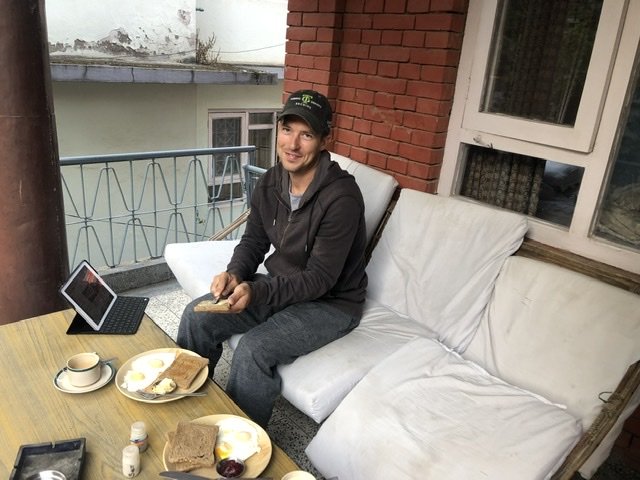
It was here we found our private room at Beehive Hostel which included a daily room service breakfast and a balcony. ($15/night)
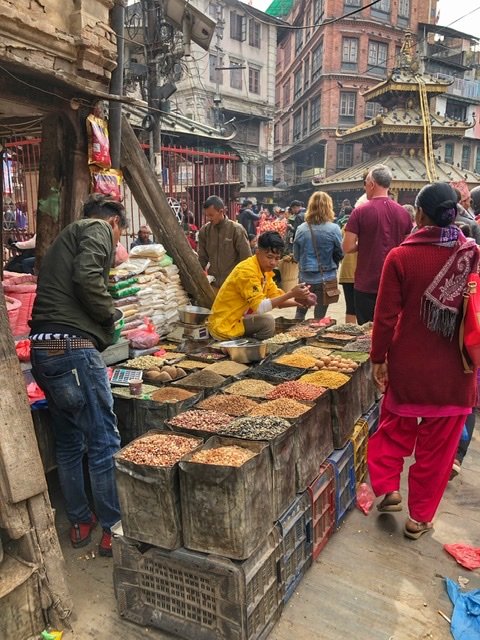
The next day, we amped up our normal exploration ensembles by tossing on our cloth (crappy) pollution masks and stuffing in our earplugs. Ah yes….Kathmandu’s Old Town is indeed bursting with energy. Its crowded mazes of backstreets are thick with ancient shrines and temples that are swarming with markets, food stalls, and vegetable sellers. And the bleating motorcycles zip around throwing up dust and exhaust in their wake. It’s a cacophony cranked to the maximum that electrifies every level of your senses.
Simple street market sellers dot nearly every intersection. This man sells a variety of dry food goods.

Older women on the streets selling small handfuls of greens or vegetables are a common sight. Making money any way they can to get by.

A peanut vendor’s cart sits in solitude.
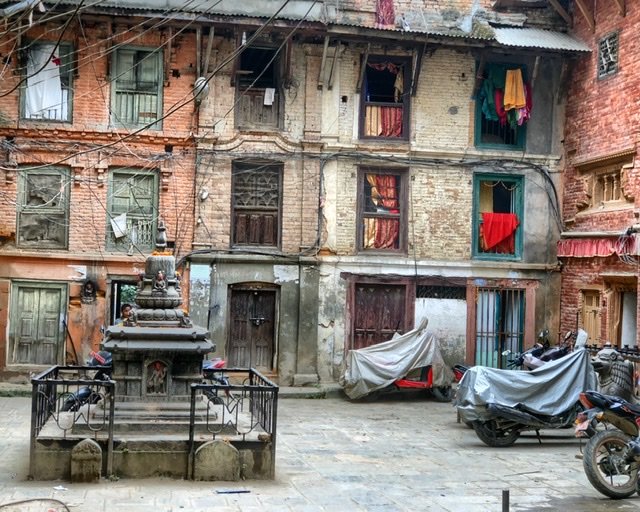
A vacant unhectic courtyard seemed so singularly photogenic when set amongst the chaos.
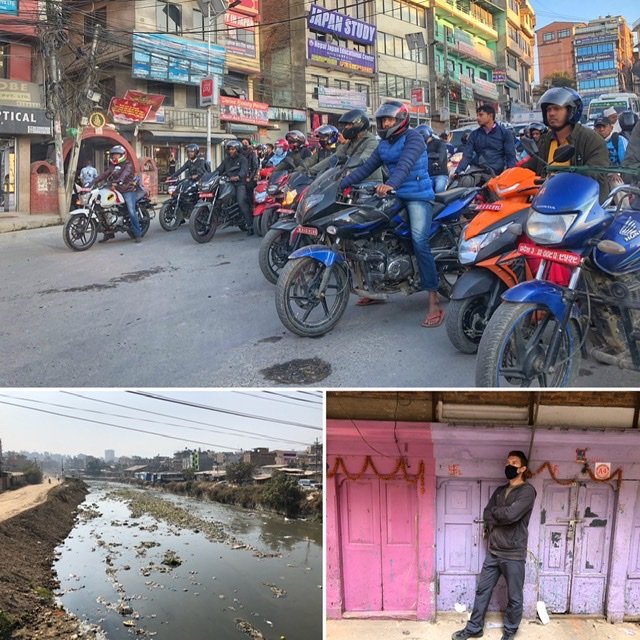
Kathmandu is one of the fastest developing cities in the world, and also one of the dirtiest and most polluted; its pollution levels topping the third worst in the world as of mid-2019. Air pollution has become so acute in Nepal that a baby born today can expect to have a two-year shorter life expectancy due solely to problems brought on by the air they breathe. The dust and smoke that fills the air makes it absolutely arresting to walk around for very long outside, the masks we had to purchase unfortunately did very little to truly help.
The water quality is tragically equally as wretched as the air, as you can see from the state of this “river.” What you can’t see, however, is the intense putrid smell from of raw sewage emanating that river. Don’t even think about drinking the tap water here either, even after using a purifier or steriPen it’ll still be toxic. The Kathmandu Valleys drinking water has been contaminated with heavy metals. ?

So although the vegetables are beautiful-looking in Kathmandu, we had obvious reservations about eating anything fresh and local.

Pickled peppers and veggies are also quite popular! For some reason, these seem…safer?

Shrines dot nearly every street corner in Kathmandu. Candles, incense, and charcoal contribute as the ‘burnt offerings’ and get lit early every single morning. It’s like they don’t even realize that all this burning is partly contributing to the air quality problem?
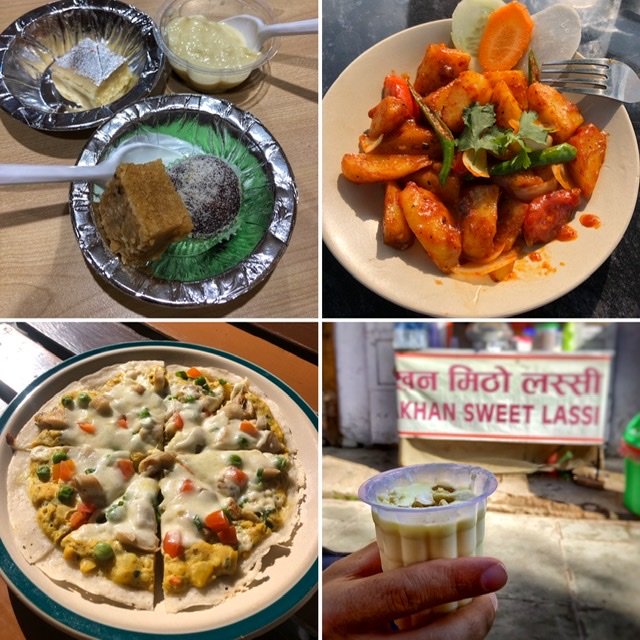
Daily life, fortunately also includes some tasty eating!
- An assortment of tasty treats from a Nepalese bakery.
- Aulu Chilly…potatoes with a delectable chili sauce!
- Chatamari—Nepali pizza with rice flour dough, and toppings that would never go on a traditional pizza…carrots, peas and a curry paste sauce.
- A Khan Sweet Lassi—a creamy drink made by blending homemade yogurt with sugar and topping it with raisins as nuts. Mmmm….thank you! We’ll have another!

What we will not be eating, thank you.
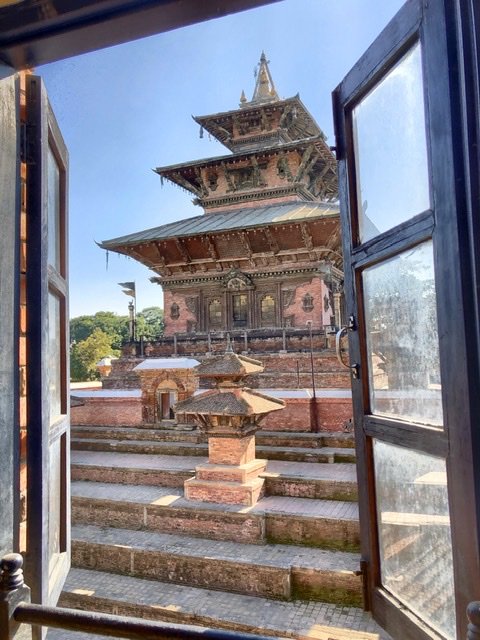
And of course, no exploration of Kathmandu is complete without showcasing its architectural marvels and religious icons. We got a terrific lunch spot view of one of the most magnificent temples in Kathmandu…the 35-meter high three-roofed Taleju Temple, which was established in 1564. It thankfully (perhaps due to the Royal goddess?) escaped major damage in the 2015 earthquake. It is surrounded by 12 mini temples around its perimeter and even for Hindus, admission is restricted; they can only visit it briefly during the annual Dasain festival.
In Durbar Square. The Newari, the indigenous peoples of Kathmandu, and the adjoining valley, have undoubtedly created some architectural showpieces that stiffly compete with many other styles of its time.

The use of striking brickwork combined with impossibly intricate woodwork certainly amazed us.
Every single building in this area is just teeming with interesting details. Love the little faces wedged into the bricks!

It’s hard not to trip over a wooden beam holding up the side of a building precariously in danger of peeling away from the mainframe, or a pile of bricks being used in reconstruction. The earthquake of 2015 hit Kathmandu’s Durbar Square and the Unesco world heritage buildings hard. Rebuilding efforts are prevalent everywhere you look. In fact, it costs 1000 rupees (about $9/person) just to walk around the square. Usually we’d gripe at such a fee, but knowing that these tourist dollars go directly to reconstruction make it worth it.

See, even this door feels optimistic!
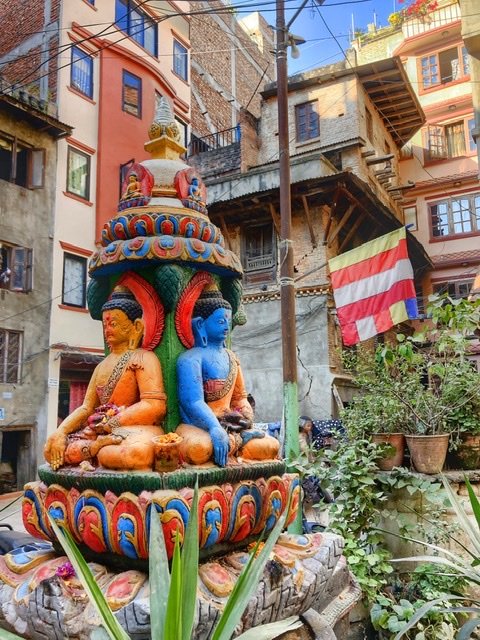
Colorful Buddhas are everywhere!
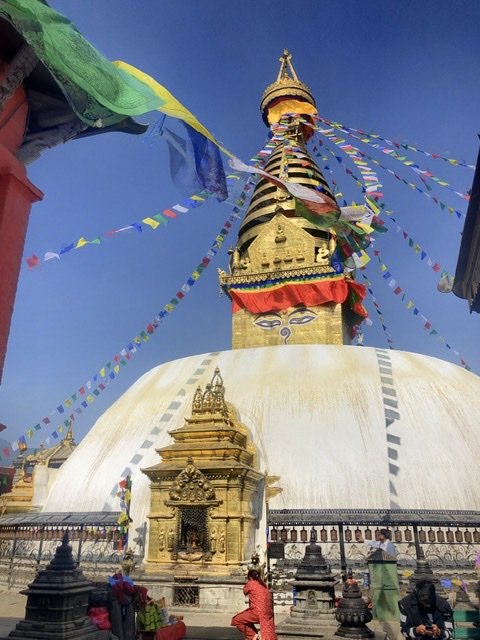
No trip to Kathmandu is complete without visiting the Swayambhunath Stupa, or Monkey Temple, as is called by tourists. (Which kinda trivializes it although it does roll a bit easier off the tongue!) This stupa is one of the holiest in Nepal, as well as oldest of its kind dating from 460 AD and has numerous shrines and monasteries on its premises. It was also littered with handicraft souvenirs and cheeky monkeys. A large number of Buddhists and Hindus alike visit Swayambhu throughout the day and is perhaps the best place to observe religious harmony in Nepal.
Why the face?? Stupas are basically burial mounds which dot the landscape in many Buddhist countries. We read that while the different sections of the stupa have various symbolic meanings, its basic shape has come to represent the seated Buddha when he achieved enlightenment. The square base represents the Buddha’s crossed legs as he sat on the earth; the middle section, called the hemisphere or mound, is the Buddha’s body; and the conical spire at the top represents the Buddha’s head. (Lionsroar.com)
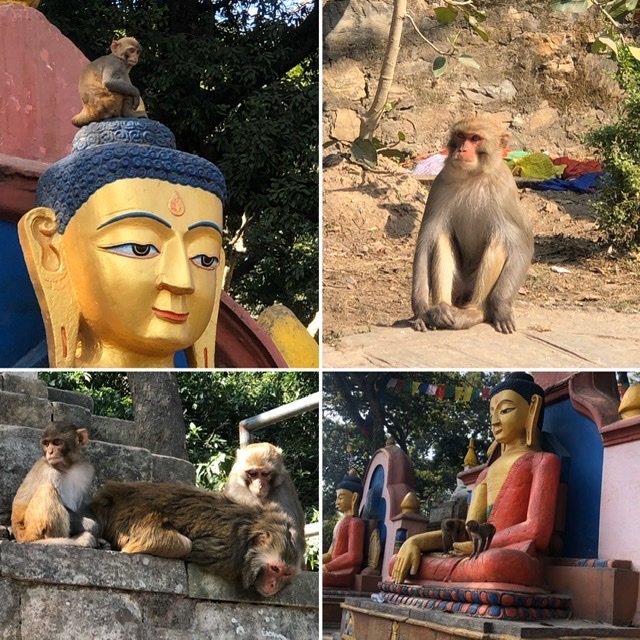
Speaking of those cheeky monkeys… The Hindus believe monkeys are sacred because they are believed to be the form of God Hanuman or Bajrang Bali, the god of power and strength.

Bath Time 
Coming for our water bottle 
This one looks depressed 🙁 
Get a room!!!
Oops. It’s really easy to get very distracted here.
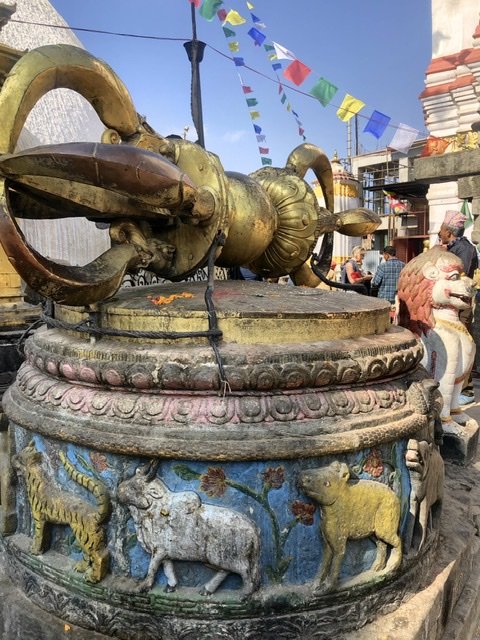
At the top of the massive flight of stairs leading to the Swayambhunath Stupa is the biggest vajra we had ever seen. The gigantic, gilded scepter was said to have packed the force of a thunderbolt. Interestingly, it’s surrounded by the signs of the zodiac.

Prayer wheels also dot the surroundings. Buddhist texts teach that mindfully turning a prayer wheel produces the same benefits as having recited the number of prayers (mantras) inside the prayer wheel multiplied by how many times the prayer wheel spins around. They are meant to be spun intentionally and with purpose. Mantras and visualizations often accompany the act.
More stupas that dot the city.
We didn’t catch the name of this temple near Durbar, but it was quite striking. Mandy models her new token Nepalese elephant pants. It seems no backpacker look is polished without these in this part of the world.
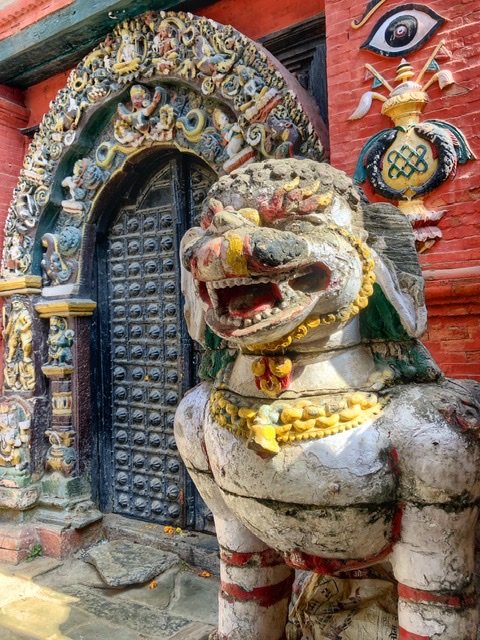
We are well aware this is a religious icon, but don’t know what it represents. He looks friendly though!
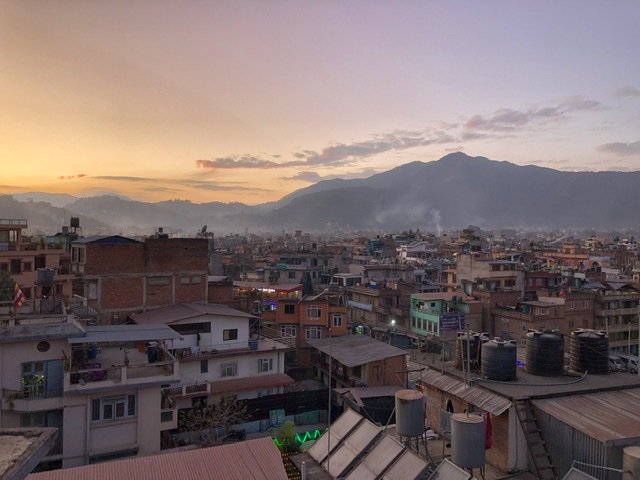
The view of Kathmandu from our hostel roof as the hazy sun sets over the valley. It’s beautiful here, but time to try and escape this pollution!

